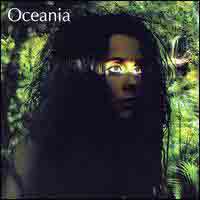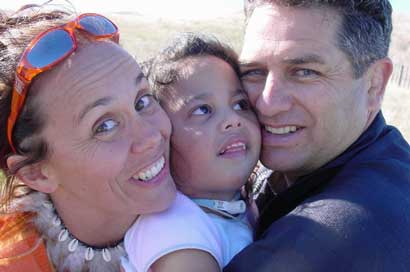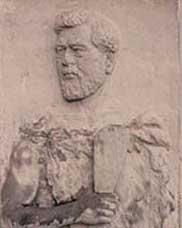the Kotahitangi movement of the 1890s, and Te Kotahitanga of the 1960s.
|
Whaka-awe-awe-awe-e (Hi) Whaka-awe-awe-awe (Au-e) Mä te ko-tahi-tanga-a, (Hi) Whaka-awe-awe-awe. Whaka-awe-awe-awe-e (Hi) Whaka-awe-awe-awe (Au-e) Mä te ko-tahi-tanga-a, (Hi) E whai ka-ha ai ta-tou Te whakahï a iwi Mei kore ake nei E kore te tangata E ora tonu i runga I tënei ao Mä tö tätou mau tonu Me te whakatü I te kotahitanga E tutuki ai ä tätou tohenga Rangatira, te tika Maungarongo Whaka-awe-awe-awe-e etc . . . (haka) I runga i ngä ngutu tangata Ngä rongotoa e Nänä i toko te kohara Te tangata pono Te ihi, te wehi, te wana He aurere e (Hi) Whaka-awe-awe-awe-e etc . . . |
Be inspired-inspired-inspired Be inspired-inspired-inspired In union . . Be inspired-inspired-inspired Be inspired-inspired-inspired Be inspired-inspired-inspired In union . . . . we have strength. The pride of the people is almost gone People will not survive in this world We must maintain solidarity and union to achieve our goals. Freedom, justice, Peace. Be inspired-inspired-inspired (chant of pride) On peoples' lips is the bravery (of our warriors). Exciting the passions of our people. The power, the fear, the awe! Ohhh, yeahhh! Be inspired-inspired-inspired . . . |
Kotahitanga
It is noted for Hinewehi's wonderful singing, with its poetic lyrics and soaring North African cadences, and also for the inclusion of the I Runga haka. The songs lyrics remind us of the Kotahitangi movement of the1890s, and Te Kotahitanga of the 1960s.
If Maori people start singing this song spontaneously at parties and concerts and political meetings, and if it is sung with ordinary voices and only a guitar backing, and with less repetition and without a drum machine, it could start living in people's hearts, and so evolve from pop song status and become a folk song.
Mana magazine's song poll
E Ipo 1,
Poi E 2, Pokarekare Ana 3, Whakaria Mai
4,
Kotahitangi 5, Akona Te Reo 6,
Te Rina 7, The Bridge 8.
The word 'kotahitanga' now has a connotation of union amongst different Maori groups who have been marginalized, (Ch'ch 1961) whilst in the past the word 'kotahitangi' had wider connotations of union between Maori and Pakeha (Papawai 1897). It is of interest that those who were polled by Mana magazine chose to describe Hinemohi's song as Kotahitangi.
Hinewehi's CD, Oceania 
Hinewehi Mohi
Ngati
Kahungunu, Ngai Tuhoe.
 She is an accomplished singer, composer, and documentary film
maker, who has been active in the promotion of Maori
performing arts and broadcasting for several years. She has
produced the presigious Maori TV program Marae, sung
the National Anthem, in Maori, at the Rugby World Cup, and has
released the album Oceania.
She is an accomplished singer, composer, and documentary film
maker, who has been active in the promotion of Maori
performing arts and broadcasting for several years. She has
produced the presigious Maori TV program Marae, sung
the National Anthem, in Maori, at the Rugby World Cup, and has
released the album Oceania.
She's is devoted to her daughter Hineraukatauri, named for the guardian of all the Maori instruments.
Hineraukatauri, who has cerebral palsey, travels with her everywhere. "She teaches us so much every day," says Hinewehi."All the very basic things in life that we take for granted are a struggle for her. But she has such a cool attitude to it that you can't help but be inspired by that strength and life." MORE ABOUT HINEWEHI
The Kotahitangi Movement, 1897
 Hamuera Mahupuku |
In its heyday Papawai Pa was richly decorated. An ornately carved gateway opened onto the marae. A continuous line of carved figures, most of them facing inwards to symbolise peace between Maori and Pakeha, and all formed from a single totara tree, surrounded the area.
In 1897 the Kotahitangi Movement parliament was established at Papawai with Hamuera Tamahau Mahupuku (c.1840-1904) as Premier. Tribal delegations from many parts of the country travelled to Papawai to discuss Government proposals with Richard Seddon and King Mahuta among those present.
The importance of Papawai faded after the death of Mahupuka in 1904. MORE ABOUT PAPAWAI
Te Kotahitanga, 1961

Linwood Park, October 2000 |
A Kotahitanga Flag
A horizontal tricolor, red over white over black, featuring a circular emblem on the central stripe. The emblem contains the word Kotahitanga curved around a central red circle containing two crossed white mere over a vertical taiaha.
Page published on web Sept 1st
2002.
Modified for small screens Apr 2021